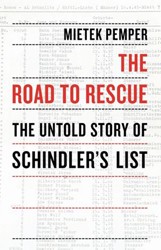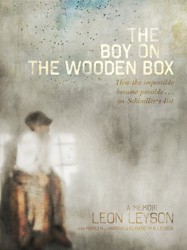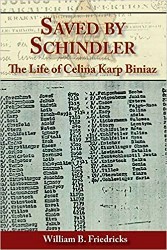Honoring the twentieth anniversary of the film Schindler’s List and the inimitable project it germinated, the USC Shoah Foundation has produced Testimony: The Legacy of the Schindler’s List and the USC Shoah Foundation, a book of eponymous testimony and testament to the lasting significance and influence of Steven Spielberg’s twin masterpiece. Accordingly, the volume is split evenly into two halves: “Schindler’s List: The Making of the Film” and “Living Testimonies: The Legacy of the Shoah Foundation”.
Part I introduces the determined Los Angeles leather goods salesman to whom the entire project is indebted, Leopold Page — formerly Poldek Pfefferberg, a Schindlerjude. Tenacious in his effort to make known the then-unrecognized hero to whom he owed his survival, Page offered the story of Oskar Schindler to every customer who might help bring it to Hollywood. Succeeding in capturing the interest of Australian novelist Thomas Keneally, Page arranged funds, contacts, and resources for his newfound partner to piece together the story of the Schindlerjuden (“Schindler’s Jews”) in Keneally’s 1982 “facticious” best-seller Schindler’s Ark.
Once Universal Studios acquired the rights to the book and approached Steven Spielberg with the project, Spielberg immediately recognized the potential of translating the documentary-style story telling of the novel to film. However, it took him another ten years to commit to Schindler’s List, and he nearly lost the entire project to Martin Scorsese; Testimony suggests that this very hold on making the film allowed Spielberg the maturation of vision, stamina, and personal wherewithal to create one of the best Holocaust films ever made, together with writer Steve Zaillan, production designer Allan Starski, director of photography Janusz Kaminski, producer and survivor Branko Lustig, and the rest of the entire, Academy-recognized crew and cast.
Just as Part I explores the realization of every element of Schindler’s List—screenplay, sets, lighting, cinematography, wardrobe, makeup, casting — the entire second half of Testimony delves into an in-depth, multi-perspective account of the creation and ongoing function of the Shoah Foundation. Begun on the plane ride home from filming Schindler’s List, the Foundation’s Visual History Archive of the Holocaust launched within a year and completed, fifty thousand testimonies later, within five. Many of the people involved in Schindler’s List threw themselves into Spielberg’s new project, inspired by their experience in making the film and encounters with the Holocaust survivors who had spontaneously shown up on the set to tell their stories. “There are 350,000 experts who just want to be useful for the remainder of the their lives,” Spielberg implored upon receiving the Best Picture Academy Award for Schindler’s List, one month before the Shoah Foundation recorded its first survivor interview. “Please listen to the words and echoes and the ghosts — and please teach this in your schools.”
As Testimony pushes further and further into the evolution and technicalities of amassing the fifty-two thousand recorded interviews that now comprise the Shoah Project archive, its pages are increasingly interrupted by transcripts of the very testimonies crunched into the numbers and facts the book presents. These excerpts range from anecdotes about life before the war to the unimaginable experiences from within the Holocaust to descriptions of how these survivors have lived since. In this, the book demonstrates its keen balance: neither under-crediting Spielberg— his vision, his savvy, and his influence, (nor allowing his prominence to overshadow the efforts of his team — down to the film extras and phone line volunteers,) Testimony serves testament to the dedication of everyone involved in one of the most monumental archival initiatives of the modern age, from Schindler’s List’s producers to its crew to its cast, from the Shoah Foundation’s visionaries to the volunteer videographers capturing interviews on their personal recording equipment, from Steven Spielberg to the aging, determined, brave, and frightened witnesses to the Holocaust who came forward to tell him — and through him, the world — not just what happened to them, but who they are, to the next generation inheriting these stories through the Shoah Foundation.
Related content:
- What’s a Nazi? by Nicholas Kulish
- Holocaust Education: The Missing Piece by Margareta Ackerman
- Photography and Remembrance by Nat Bernstein
Nat Bernstein is the former Manager of Digital Content & Media, JBC Network Coordinator, and Contributing Editor at the Jewish Book Council and a graduate of Hampshire College.




